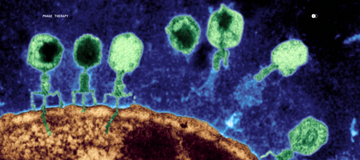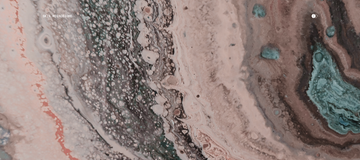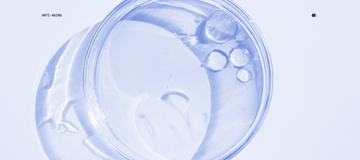The Essential Guide to Skin Barrier Health: Protect, Repair, and Restore
by Parallel Health Team
Why Your Skin Barrier Matters
Your skin barrier is your body's first line of defense—a complex biological shield that protects you from environmental threats while keeping essential moisture locked in. This remarkable structure, primarily located in the stratum corneum, consists of specialized skin cells called corneocytes embedded in a lipid-rich matrix of ceramides, cholesterol, and fatty acids. Think of it as a "brick and mortar" wall, where skin cells are the bricks and lipids form the mortar binding them together. When this barrier functions properly, it prevents water loss, blocks harmful pathogens and allergens, and maintains skin health. However, when compromised, the consequences extend far beyond cosmetic concerns—barrier dysfunction is strongly linked to microbial overgrowth and inflammatory skin conditions including atopic dermatitis, eczema, rosacea, and acne.
What Damages Your Skin Barrier?
Modern life constantly assaults your skin barrier. Environmental stressors like UV radiation, pollution, and extreme temperatures gradually wear down its defenses. The COVID-19 pandemic highlighted how frequent handwashing and sanitizer use can disrupt barrier function. Harsh skincare products containing sulfates, alcohols, and aggressive exfoliants strip away protective lipids faster than your skin can replenish them. Over-cleansing, using water that's too hot, and aggressive scrubbing physically damage the barrier structure. Internal factors matter, too—stress, poor sleep, nutritional deficiencies, and hormonal changes all compromise your skin's ability to maintain its protective barrier. Even normal aging reduces ceramide production and slows skin cell turnover, making barrier maintenance more challenging over time.
Warning Signs of Barrier Damage
Your skin sends clear distress signals when its barrier is compromised. Persistent dryness and rough texture are often the first indicators, accompanied by visible flaking or scaling. Increased sensitivity means products that never bothered you before now may cause stinging or burning. Redness and inflammation appear more easily and take longer to resolve. You might notice your skin feels uncomfortably tight, especially after washing. Increased transepidermal water loss (TEWL) manifests as dehydration that no moisturizer seems to fix. Breakouts may worsen as barrier dysfunction allows bacteria to penetrate more easily while simultaneously triggering inflammatory responses. The skin may appear dull and lose its healthy glow, and chronic itchiness or irritation becomes a constant companion.
Science-Backed Solutions for Barrier Repair
Repairing a damaged skin barrier requires a strategic, multi-faceted approach. First, simplify your routine—strip back to gentle, fragrance-free cleansers and avoid over-washing. Focus on barrier-supporting ingredients including ceramides, which replenish the lipid matrix; niacinamide, which boosts ceramide production; and fatty acids that restore the lipid barrier. Hyaluronic acid draws moisture into the skin, while peptides signal skin cells to increase collagen and structural protein production.
The skin microbiome plays a crucial role in barrier health—probiotics and prebiotics help balance beneficial bacteria that support barrier function and modulate immune responses. For more targeted intervention, custom phage therapy represents a breakthrough approach that uses precision-engineered bacteriophages to selectively eliminate pathogenic bacteria (like Staphylococcus aureus) without harming beneficial microbes. By removing harmful bacteria that drive inflammation and barrier disruption, phage therapy creates the optimal conditions for a balanced microbiome to flourish, enabling your skin barrier to heal naturally and sustainably.
Protect healing skin with broad-spectrum SPF daily, and give your barrier time to rebuild, typically 2-8 weeks, depending on severity, with consistent care.
Parallel Health's Microbiome Skincare
Parallel Health's Skin Barrier Biotic™ Cream and Blue Biotic™ Multi-Effect Peptide Cream represent the next generation of barrier repair, harnessing cutting-edge microbiome science. These innovative formulations combine precision-selected probiotics that support beneficial skin bacteria, prebiotics that nourish your skin's microbiome, and bioactive peptides that stimulate barrier repair at the cellular level. Unlike conventional moisturizers that merely sit on the skin's surface, these biotic creams work synergistically to restore barrier function from within—balancing your microbiome, reducing inflammation, and actively rebuilding the protective lipid matrix. The peptide complexes signal fibroblasts to produce collagen and keratinocytes to strengthen tight junctions, while the pro- and prebiotic elements create an optimal environment for beneficial bacteria to thrive, naturally defending against pathogenic microbes and supporting long-term barrier health.
Frequently Asked Questions
Q: How long does it take to repair a damaged skin barrier?
A: With consistent use of barrier-supporting products, most people see improvement within 2-4 weeks. Severe damage may take 6-8 weeks to fully restore.
Q: Can I use active ingredients like tretinoin or tazorac while repairing my barrier?
A: It's best to pause potentially irritating actives until your barrier is restored. Focus on gentle, hydrating, and barrier-repair ingredients first.
Q: What's the difference between probiotics and prebiotics in skincare?
A: Probiotics are beneficial live bacteria (or their extracts) that help balance your skin microbiome. Prebiotics are nutrients that feed and support the growth of these beneficial bacteria.
Q: How do peptides help with barrier repair?
A: Peptides are signaling molecules that communicate with skin cells, triggering increased production of structural proteins like filaggrin and loricrin, which are essential for barrier integrity.
Q: Should I change my diet to support skin barrier health?
A: Yes! A diet rich in omega-3 fatty acids, antioxidants, and fermented foods supports both gut and skin health through the gut-skin axis.
Q: What is phage therapy and how does it help my skin?
A: Phage therapy uses naturally occurring bacteriophages (nano-microbes that infect bacteria) to target and eliminate specific harmful bacteria on your skin without affecting beneficial microbes, helping restore microbial balance and reduce inflammation.
Scientific References
- Baker P, Huang C, Radi R, et al. Skin Barrier Function: The Interplay of Physical, Chemical, and Immunologic Properties. Cells. 2023;12(23):2745. doi:10.3390/cells12232745
- Proksch E, Brandner JM, Jensen JM. The skin: an indispensable barrier. Exp Dermatol. 2008;17(12):1063-1072. doi:10.1111/j.1600-0625.2008.00786.x
- Barthe M, Clerbaux LA, Thénot JP, Braud VM, Osman-Ponchet H. Systematic characterization of the barrier function of diverse ex vivo models of damaged human skin. Front Med (Lausanne). 2024;11:1481645. doi:10.3389/fmed.2024.1481645
- Al-Ghazzewi FH, Tester RF. Impact of prebiotics and probiotics on skin health. Benef Microbes. 2014;5(2):99-107. doi:10.3920/BM2013.0040
- Sinha S, Lin G, Ferenczi K. The skin microbiome and the gut-skin axis. Clin Dermatol. 2021;39(5):829-839. doi:10.1016/j.clindermatol.2021.08.021
- Li M, Mao J, Diaz I, et al. Multi-omic approach to decipher the impact of skincare products with pre/postbiotics on skin microbiome and metabolome. Front Med. 2023;10:1165980. doi:10.3389/fmed.2023.1165980
- He B, Wang F, Qu L. Role of peptide-cell surface interactions in cosmetic peptide application. Front Pharmacol. 2023;14:1267765. doi:10.3389/fphar.2023.1267765
- Notay M, Foolad N, Vaughn AR, Sivamani RK. Probiotics, prebiotics, and synbiotics for the treatment and prevention of adult dermatological diseases. Am J Clin Dermatol. 2017;18(6):721-732. doi:10.1007/s40257-017-0300-2
- Md Fadilah NI, Shahabudin NA, Mohd Razif RA, et al. Discovery of bioactive peptides as therapeutic agents for skin wound repair. J Tissue Eng. 2024;15:20417314241280359. doi:10.1177/20417314241280359
- Shirkhan F, Safaei F, Mirdamadi S, Zandi M. The Role of Probiotics in Skin Care: Advances, Challenges, and Future Needs. Probiotics Antimicrob Proteins. 2024;16(6):2132-2149. doi:10.1007/s12602-024-10319-y



























